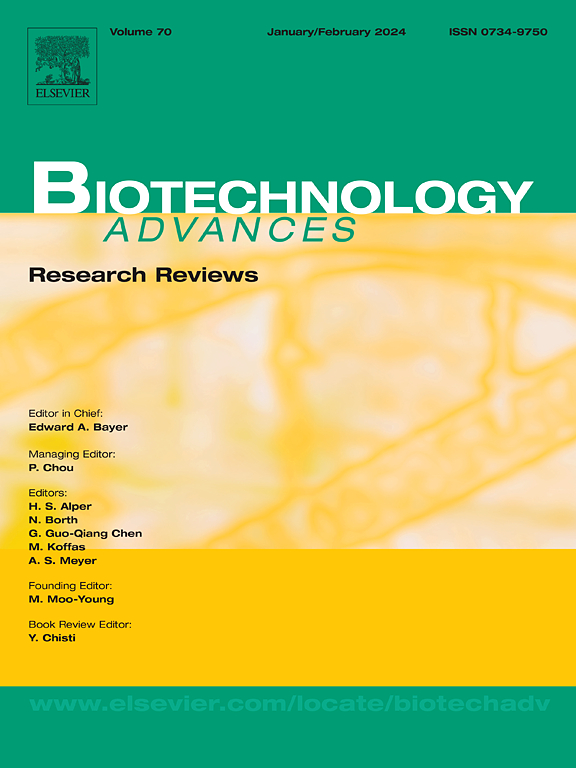盐柳属植物及其科植物:在生物工业中的潜在作用。
IF 12.5
1区 工程技术
Q1 BIOTECHNOLOGY & APPLIED MICROBIOLOGY
引用次数: 0
摘要
盐藻科是一种极端嗜盐的古菌,具有独特的生理和遗传特征,使其成为生物技术应用的有希望的候选者。这些生物在高盐环境中茁壮成长,并能承受各种压力,包括高温、紫外线辐射和有毒金属。它们在农业工业废物上生长的能力,加上它们固有的抗污染能力和通过渗透冲击进行下游加工的简单性,使它们成为可持续生物生产的理想选择。地中海盐藻等物种已被探索用于生物合成多羟基烷酸盐、类胡萝卜素、盐素和在极端条件下发挥功能的酶。盐菜科植物也可以生物修复被碳氢化合物、重金属和含氮废物污染的盐碱化环境。遗传工具的进步,包括CRISPR干扰、诱导启动子和敲入/敲除系统,特别是在H. volcanii中,极大地扩展了这些古细菌的工程潜力。然而,在这个家族的遗传工具方面仍然需要进一步的创新。这篇综述强调了盐菜科在循环生物经济应用方面不断扩大的潜力,并确定了限制其广泛工业应用的关键技术差距。本文章由计算机程序翻译,如有差异,请以英文原文为准。
Haloferax and the Haloferacaceae: Potential role in bioindustry
Members of the Haloferacaceae, a family of extremely halophilic archaea, exhibit unique physiological and genetic traits that make them promising candidates for biotechnological applications. These organisms thrive in hypersaline environments and tolerate a wide range of stresses, including high temperatures, UV radiation, and toxic metals. Their ability to grow on agro-industrial waste, coupled with their inherent resistance to contamination and the simplicity of downstream processing via osmotic shock, makes them ideal for sustainable bioproduction. Species such as Haloferax mediterranei have been explored for the biosynthesis of polyhydroxyalkanoates, carotenoids, halocins, and enzymes functional under extreme conditions. Species of Haloferacaceae can also bioremediate saline environments contaminated with hydrocarbons, heavy metals, and nitrogenous waste. Advances in genetic tools, including CRISPR interference, inducible promoters, and knock-in/knock-out systems, particularly in H. volcanii, have significantly expanded the engineering potential of these archaea. However, there remains a need for further innovation in genetic tools for this family. This review highlights the expanding potential of the Haloferacaceae for circular bioeconomy applications and identifies key technological gaps limiting their broader industrial adoption.
求助全文
通过发布文献求助,成功后即可免费获取论文全文。
去求助
来源期刊

Biotechnology advances
工程技术-生物工程与应用微生物
CiteScore
25.50
自引率
2.50%
发文量
167
审稿时长
37 days
期刊介绍:
Biotechnology Advances is a comprehensive review journal that covers all aspects of the multidisciplinary field of biotechnology. The journal focuses on biotechnology principles and their applications in various industries, agriculture, medicine, environmental concerns, and regulatory issues. It publishes authoritative articles that highlight current developments and future trends in the field of biotechnology. The journal invites submissions of manuscripts that are relevant and appropriate. It targets a wide audience, including scientists, engineers, students, instructors, researchers, practitioners, managers, governments, and other stakeholders in the field. Additionally, special issues are published based on selected presentations from recent relevant conferences in collaboration with the organizations hosting those conferences.
 求助内容:
求助内容: 应助结果提醒方式:
应助结果提醒方式:


